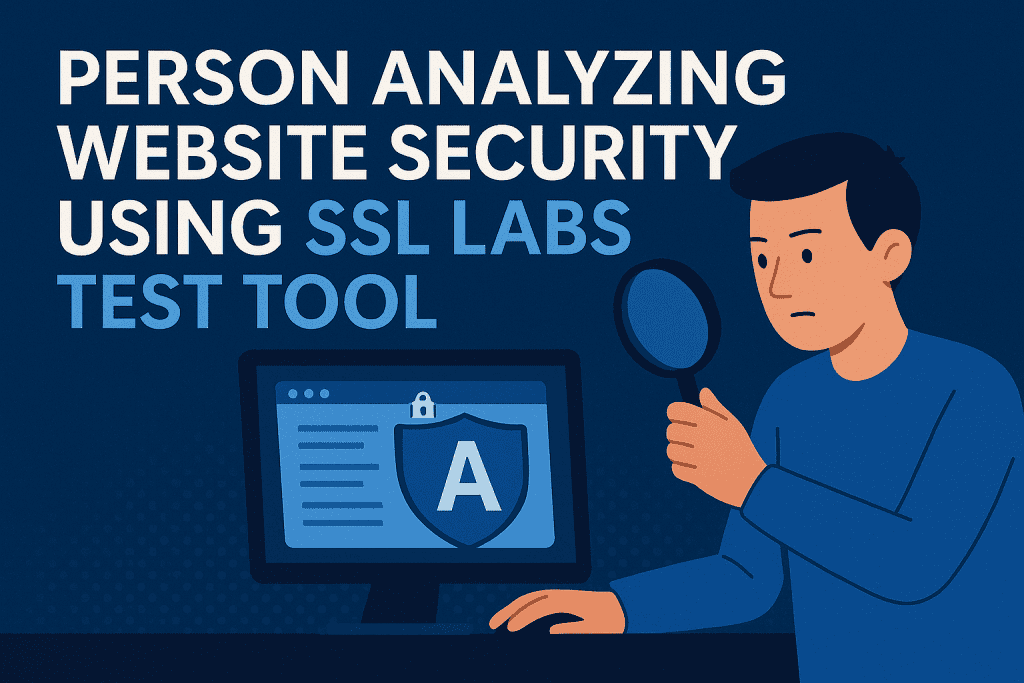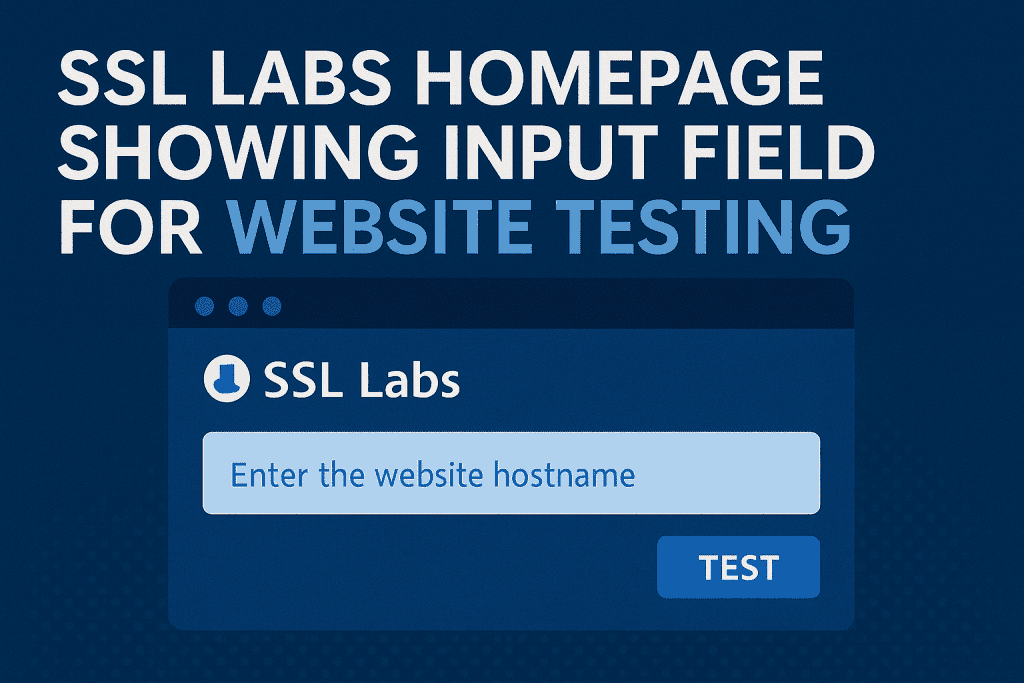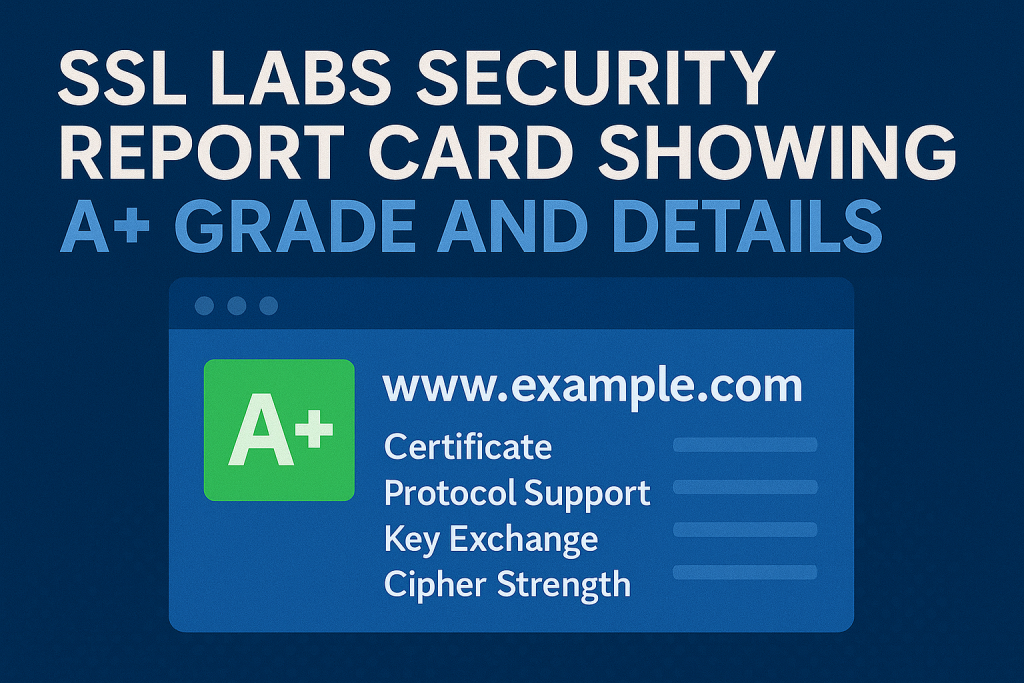Testing your website’s SSL security using SSL Labs is one of the smartest steps you can take to defend against cyber threats. Whether you’re just starting out or managing a large online platform, ensuring that your SSL certificate is properly configured helps protect your users and your data. SSL Labs performs a deep analysis of your site’s HTTPS configuration and highlights weaknesses that might otherwise go unnoticed. These can include outdated protocols, weak cipher suites, or incomplete certificate chains.
The test results are presented in an easy-to-read format, even for those without a strong technical background. What makes SSL Labs stand out is its clarity and reliability. You get a clear security grade, actionable advice, and peace of mind knowing where your website stands. Since it is free to use, there is no reason to delay. Regular checks with SSL Labs keep your security sharp and up to date.

SSL Labs Materials or Tools Needed
Before starting your SSL Labs test, ensure you have the following essential materials and tools:
| Material/Tool | Purpose |
|---|---|
| Internet Connection | Reliable access to SSL Labs test |
| Your Website URL | URL for testing SSL security |
| Web Browser | Access to Qualys SSL Labs online |
| Optional: SSL Checker | Cross-check SSL certificate |
Additionally, a clear understanding of basic cybersecurity concepts will enhance the testing process.
SSL Labs Instructions
Step 1: Accessing SSL Labs Website

The first step to testing your website’s SSL security is accessing the SSL Labs test platform. Begin by visiting ssllabs.com/ssltest, which is the official test page provided by Qualys. This page offers a straightforward user interface. Right at the center, you’ll notice a box where you can input the URL of the website you wish to test. Make sure your browser is up to date to avoid any loading issues or rendering problems. This page does not require any login or subscription, which makes it accessible for both casual users and cybersecurity professionals.
Once on the page, take a few seconds to scan the layout so you’re familiar with where the results and test progress will appear. This foundational step sets the stage for a successful SSL evaluation, ensuring you’re in the right place and ready to proceed.
Step 2: Entering Your Website URL
Once you’re on the test page, the next step is to input your site’s full URL. It’s important to include the HTTPS prefix. This tells the tool to scan the SSL certificate associated with your secured domain. Carefully type or paste your address into the text field. Avoid any spelling errors, as this could lead to testing the wrong target or receiving a failed result. After entering the correct URL, click the “Submit” button. The platform will then start analyzing your SSL configuration.
This includes examining protocol support, key exchange strength, and cipher usage. Depending on the complexity of your setup, the scan can take a few minutes. It’s a thorough and detailed process that ensures no part of your encryption setup is overlooked. By entering the right URL, you set the process in motion for an accurate security assessment.
Step 3: Reviewing SSL Labs Results

After the scan completes, you’ll receive a comprehensive report card with your website’s security grade ranging from A+ to F. This grade reflects how secure your SSL setup is based on various metrics. The report is split into different sections: protocol support, cipher strength, key exchange details, and certificate information. Each section shows whether your site is using outdated technology or strong, modern encryption. Green indicators show good security practices, while red flags highlight vulnerabilities.
Pay close attention to any section marked as weak or vulnerable. The tool also provides explanations for each issue along with recommendations. These suggestions help you understand what needs fixing and how to improve your security score. This stage is crucial because it not only tells you your site’s current status but also guides you on how to enhance its cybersecurity posture.
Step 4: Addressing Vulnerabilities
Once you’ve reviewed the test report, the next logical step is to act on the vulnerabilities it highlights. Common issues include the use of weak encryption algorithms, outdated protocol versions like TLS 1.0, or incomplete certificate chains. If your SSL certificate is outdated, consider switching to a free SSL provider that offers strong encryption and easy installation. Also, pay attention to weak ciphers or protocols that could make your site vulnerable to man-in-the-middle attacks.
Implement the recommendations provided in the results, such as upgrading to TLS 1.3 or configuring your server for stronger cipher suites. If you’re unsure how to fix these issues, consult with your hosting provider or use server hardening tools. This step is where you take control of your site’s security. Making these changes not only improves your security evaluation grade but also boosts overall trust with your users.
SSL Labs Tips and Warnings
Testing with SSL Labs can significantly enhance your cybersecurity posture. Here are some additional tips and common pitfalls to keep in mind:
| Tips to Follow | Common Mistakes to Avoid |
|---|---|
| Run SSL tests regularly | Forgetting to re-check periodically |
| Address vulnerabilities immediately | Ignoring SSL warnings |
| Use reliable tools like SSL checker | Relying solely on initial test |
| Stay updated with cybersecurity news | Using weak encryption protocols |
Conclusion
SSL Labs provides one of the most reliable and easy-to-use tools for SSL Labs provides one of the most reliable and easy-to-use tools for evaluating your website’s SSL security. It walks you through a simple process that starts by entering your site’s URL and ends with a full diagnostic report packed with insights. This transparency allows you to see exactly how your configuration holds up under current cybersecurity standards. The best part is that you do not need to be an expert.
The tool clearly explains potential problems and offers practical suggestions on how to fix them. Whether you manage a personal blog or run a corporate platform, protecting your users’ data should be a top priority. This solution gives you a free and efficient way to make that happen. By using it regularly, you ensure that your certificates stay current and strong enough to deter potential threats. Do not wait until hackers exploit a weakness in your system. Take proactive steps now with this trusted tool and build a safer, more trustworthy online presence for every visitor who lands on your site.
FAQ
Why is SSL Labs important for cybersecurity?
Using SSL Labs in cybersecurity helps identify weaknesses in your SSL certificates and encryption protocols. Regular testing prevents cyber threats and ensures secure data transmission between your users and your server.
Is SSL Labs free, and how often should I use it?
Yes, SSL Labs is a completely free SSL testing service. For optimal cybersecurity, test your website at least once monthly or immediately after significant website updates or certificate renewals.
Can SSL Labs detect all Cyber Threats?
While SSL Labs excels in detecting SSL certificate vulnerabilities, it doesn’t identify all Cyber Threats. Combine it with additional cybersecurity tools for comprehensive website protection.
Resources
- Really Simple SSL. About SSL Labs.
- Qualys. SSL Labs Test.
- Arctic Wolf. Increased Ransomware Activity Linked to SSL VPN.
- Visual Studio Marketplace. SSL Labs Test Integration.
- Qualys Success. SSL Labs Troubleshooting Guide.
- Hacker News. SSL Labs Discussion.
